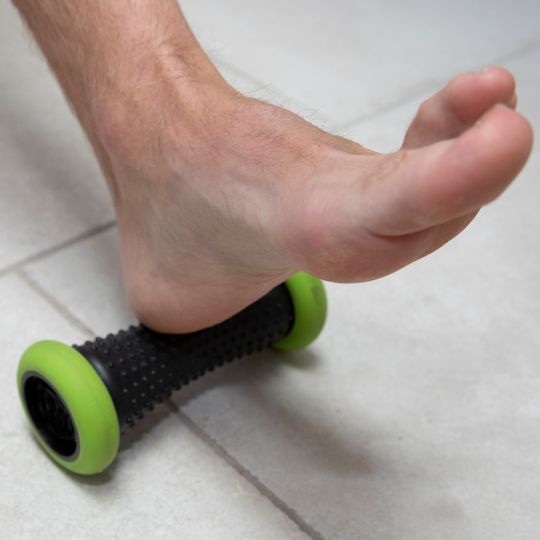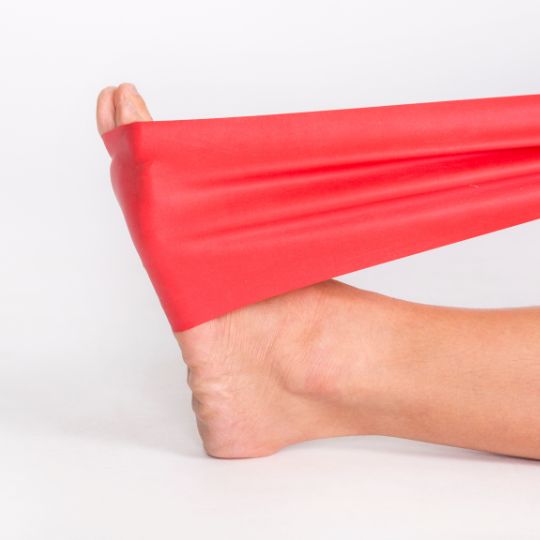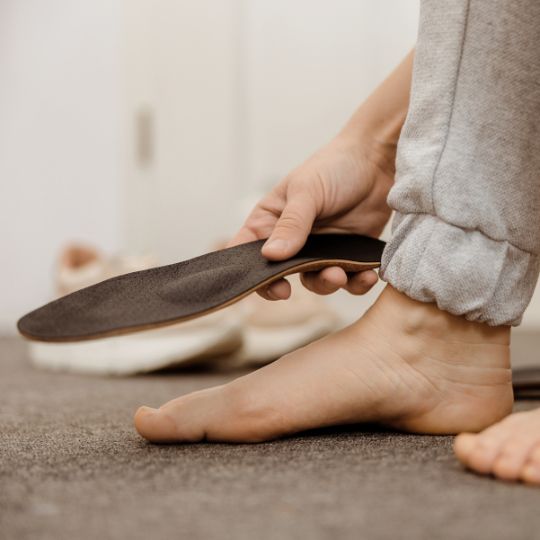Introduction
Contents
- 1 Introduction
- 2 Chapter 1: My Plantar Fasciitis Experience
- 3 Chapter 2: Plantar Fasciitis Diet
- 4 Chapter 3: Which Exercises to Do for Plantar Fasciitis?
- 5 Chapter 4: Magnesium, Vitamins and Caffeine – Do They Help with Plantar Fasciitis?
- 6 Chapter 5: Lessons from My Recovery Journey from Plantar Fasciitis
- 7 Chapter 6: The Road Ahead
Hi there, fellow journeyers. Are you attempting to comprehend and treat plantar fasciitis? Allow me to recount my path to you—a story of struggle, failure, and ultimate success. Like any good tale, mine is chock-full of revelations, such as the dos and don’ts of plantar fasciitis diet and exercises that helped me navigate the complexity of my foot disease. By sharing, I aim to help illuminate your path a bit more than mine was at the beginning.
Chapter 1: My Plantar Fasciitis Experience
My nightmare with plantar fasciitis began one morning when the first step out of bed felt like I was walking on a rough path covered in stones. After seeing a doctor, my fears were confirmed: plantar fasciitis, which came out of nowhere to give me a handshake (or should I say legshake in this case). According to this scientific study, plantar fasciitis is an inflammation of the thick band of tissue that runs over the sole of your foot and connects your heel bone to your toes.
Chapter 2: Plantar Fasciitis Diet

Best Foods for Plantar Fasciitis
My initial mission was to modify my diet to emphasize items that could potentially reduce inflammation.
- Leafy greens and spinach: they were my green, leafy sidekicks. These nutrients are potent anti-inflammatory weapons because they are rich in vitamin C, magnesium, calcium, and MSM.
- Proteins rich in Omega-3: I started getting most of my protein from fatty fish (mainly salmon and tuna) and seeds (flaxseeds) with high Omega-3 fatty acids due to their anti-inflammatory properties. My secondary source of protein during plantar fasciitis recovery days was lean meat and legumes. My regular diet remained the same for nuts, olive oil, and avocados as they are always considered to be a great source of nutrients and might even help with plantar fasciitis due to the monosaturated fatty acids found in them.
- Whole grain and low-fat milk: When I had plantar fasciitis and walked like a zombie, I kept my carb intake to a bare minimum and only ate whole-grain bread, roti, or rice. I also opted for low-fat or no-fat milk.
- Turmeric and ginger: I remember incorporating anti-inflammatory wellness shots into my diet during my battle with plantar fasciitis. And they worked like a charm. If you are interested, please read my piece on homemade turmeric and ginger shot recipe.

What Foods to Avoid with Plantar Fasciitis
I knew that only eating an anti-inflammatory foods wouldn’t speed up my recovery from plantar fasciitis. Identifying which foods exacerbate inflammation and avoiding them was just as important.
Therefore, I steered away from foods known to be inflammatory and might have delayed my recovery from plantar fasciitis. My sweet tooth had to take a backseat as I said goodbye to my favourite blueberry cheesecake, chocolate pastries and crepes. Most processed foods like white bread and rice were off my dining table. Not eating red meat was incredibly challenging as I am an avid beef lover.
In addition, I was cautious in my intake of potatoes, tomatoes, and their kin due to their potential to increase inflammation in some people. Whenever I am under the weather, I eat more junk food than usual. However, in the case of plantar fasciitis, I turned off notifications for Uber Eats and Grubhub and was able to reduce my fast food ordering by 80% (don’t blame me for the 20%; you don’t know whether it was a healthy or unhealthy snack).
Chapter 3: Which Exercises to Do for Plantar Fasciitis?

Activities to Adopt
Plantar Fasciitis Exercises: At my physiotherapist’s recommendation, I regularly kept myself busy with exercises specifically designed for plantar fasciitis patients. I had to do a wide range of activities, such as towel stretching, toe extension, plantar fascia stretching while seated, and standing calf stretching, to mention a few.
Swimming: My sanctuary. The water supported my body, allowing me to exercise without burdening my feet. So, my friend, those of you still wondering, ‘Is swimming good for plantar fasciitis?’ I answer that swimming helps keep you active and healthy during plantar fasciitis. And it’s one of the few exercises where you won’t have to say, ‘Feet, don’t fail me now!’.
Low-Impact Workouts: I embraced cycling and yoga, which allowed me to stay active without the harsh impact on my feet. If I were in pain because of plantar fasciitis or didn’t feel like exercising, I would still have an ‘adult tummy time’ instead of just sitting or lying down.

Exercises to Avoid with Plantar Fasciitis
Running and Jumping: It pained me to put my running shoes aside, but I knew that high-impact activities were off-limits for someone suffering from plantar fasciitis.
Chapter 4: Magnesium, Vitamins and Caffeine – Do They Help with Plantar Fasciitis?
Plantar Fasciitis Supplements
Magnesium: A newfound friend that helped with plantar fasciitis by absorbing calcium, possibly preventing heel spurs.
Vitamin D3: A daily supplement to combat the vitamin deficiency that could worsen my plantar fasciitis condition.
Coffee and Plantar Fasciitis
Coffee, my morning ritual, had to undergo scrutiny. While not directly linked to plantar fasciitis, I chose to moderate my intake in favour of hydration, which was crucial for managing inflammation.

Custom Arch Supports for Plantar Fasciitis
Visiting a specialist for custom arch supports turned out to be a game-changer. These tailored devices offered the support my feet desperately needed, providing relief and stability during my combat with plantar fasciitis.
Chapter 5: Lessons from My Recovery Journey from Plantar Fasciitis
Listening to My Body
One of the greatest lessons I learned was the importance of listening to my body. Recognizing the signs of strain and responding with appropriate adjustments in activity and diet was vital.
The Importance of Patience
Recovery wasn’t overnight. Patience and persistence were required because it was a slow process. Although I encountered obstacles, I learned from them all and am now better able to control my health and understand my body.
Chapter 6: The Road Ahead
Today, I stand (comfortably) as a testament to the power of informed choices in managing plantar fasciitis. My diet is balanced, my activities are chosen with care, and my feet are supported literally and metaphorically.
Sharing the Map for Others to Fight Plantar Fasciitis
By sharing my journey, I hope to offer you a map—marked with the pitfalls I encountered and the safe paths I found. Remember that although your path is unique, you are not alone in it. Learn from the experiences of others, get advice from medical experts, and pay close attention to your body’s signals.
Finally, let us go on this journey side by side, taking little but steady steps toward improved foot health and joy. Remember, it’s not just about reaching the destination—it’s about making the journey manageable, learning about yourself, and perhaps helping others along the way. Here’s to taking that next step with wisdom and support.








